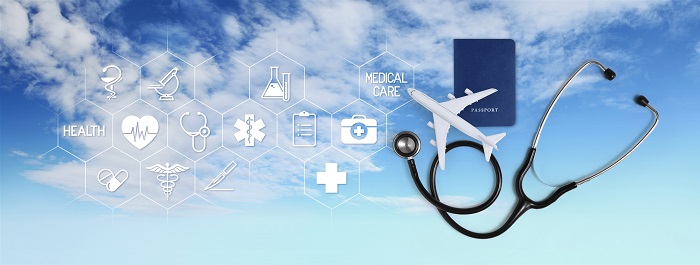
Medical air transport
Medical Air Transport: A Handy Medical Air Transport Guide
When you hear the term medical air transport, what comes to mind? We can confidently assume that 1 in every three people will picture a helicopter rescuing critically ill patients or victims of an accident. However, that’s the most common misconception about medical air transport.
The above scenario was an example of emergency medical air transport. In this article, we will separate emergency medical transport and non-emergency medical transport. We will also differentiate between rotary and fixed-wing medical transportation, common medical transport choices, and tips to pick the right medical air transport company for your requirement.
Keep in mind, if you are making arrangements for a sick parent or family member to move back or closer to home, it’s a non-emergency medical transport. With that in mind, let’s take a look at everything you need to know about medical air transport.
Types of Medical Air Transport
There are medical flights, and then there are emergency medical flights. While both flights serve the same purpose, there’s a clear distinction between the two, with the keyword being emergency.
The end goal of all medical air transport and medical private jet is the same, which is to transport the patient quickly and safely to the next level of care they require. While the service has been described widely as an air ambulance, medical flights, or medical air transportation, there are two distinct types of medical air transports.
Emergency medical air transport – rotary service
Non-emergency medical air transport – fixed-wing service
The first option is the rotary service, a more technical term for medical air transport through aircraft or helicopters. These are often used for frontline response in case of critically urgent emergencies. These situations can vary from natural calamities to man-made disasters like fire. Rotary services and emergency medical air transport are required when there’s a need to relocate patients as fast as possible from some difficult-to-access locations. The medical professionals on the emergency medical flights help preserve life until they reach the intensive care unit.
The fixed-wing or non-emergency medical air transport is on the opposite end of the spectrum. This type of transport is suitable for non-critical patients looking to move to subsequent level care or head back home. The fixed-wing medical air transport or airplanes are usually upfitted with all the equipment necessary for an advanced level of care. Additionally, some reputed air transport companies also have critical care nurses and paramedics onboard to provide intensive care and treatment to the patient onboard if the need arises.
It’s more for people to have peace of mind during the flight. Having a team of registered nurses, paramedics, and more for emergencies ensures that they will arrive safely at the destination. This is usually availed by senior citizens, chronic patients, and other such individuals.
Common Medical Air Transport Choices
It’s evident that for routine transport of patients like senior citizens or people with terminal illnesses, fixed-wing medical air transport is better suited. However, the next choice to make is whether to pick a propeller plane or jet aircraft. This decision is mainly based on the destination and the distance to be covered.
Propeller planes are compact and ideal for rural areas with smaller runways. The range and airspeed of the propeller planes are less, which makes them suitable for short-distance transport. Therefore, picking the propeller planes will get the job done and save you some money for medical road transport if your destination is not that far. In remote locations, a combination of road and air transport is required, including an ambulance to reach the aircraft.
For the more critical patients, it’s better to opt for jet aircraft. These medical air transport can fly at higher altitudes to avoid turbulence and bad weather, which could cause issues. Moreover, these planes can fly faster — nearly at the speed of sound— and help the patient reach their destination as quickly as possible.
In case it’s a long-distance transport, it’s always best to pick jet aircraft. There are two options available – assisted medical flight on commercial airlines and private jet. The former is suited for medically stable patients who might require assistance during flights. On the other hand, private jets are a much better option for critical patients. Private jets allow family members to travel with the patient and undiverted attention. Moreover, most critical patients have suppressed immunity and are at the risk of contracting more infections, which is negated by a private jet.
Tips to Choose Medical Air Transport Company
Speaking of choosing the right medical air transport company, it does take a little diligence. First and foremost, make sure that a third party accredits the company you pick. Recognition from NAAMTA, CAMTS, and other organizations means that the company adheres to the highest medical and operational care standards.
Next up, enquire and ask for the credentials of the medical flight staff. They should have advanced technical certification for nurses and paramedics to deal with any emergency during the flight. Once you have ensured that the company and its staff are credible, look into their presence in the medical transport field. Details like partnerships with reputed health care institutions and doctors are a surefire way of knowing that the company is legit.
For your peace of mind, dig deeper and read online testimonials from their past clients, social media interactions, an active social media presence, and reviews left by the clients on various forums or search engines to make sure they are trustworthy.
Hopefully, this article gave you some insight into medical air transport and various options available. By now you should be aware of which medical air transport is suitable for your needs. The bottom line here is that it all depends on the urgency of the situation and the level of care required.

